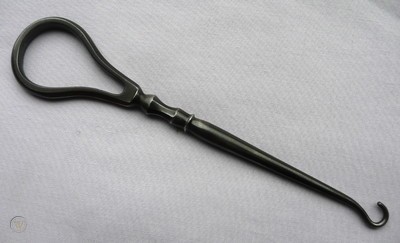
Have you ever stumbled upon an item at an antique store and wondered its original purpose? Years ago, while shopping at a local antique store, I came across a gadget with a loop handle on one end and a rounded hook on the other end. Unsure of its purpose, I glanced at the price tag, which identified it as a buttonhook. Still unclear of its function, I did a quick Google search on my smartphone and discovered it was a tool used for fastening buttons during the Victorian era.
HISTORY OF THE BUTTONHOOK
Following the invention of the automatic buttonhole machine in 1862, boots made with rows of tiny buttons became common. By the 1880s, gloves and garments also began to feature long rows of buttons that were nearly impossible to fasten with one’s fingers. A tool called a buttonhook was required to do the job. While grasping the handle firmly, one would slide the hook through the buttonhole, catching the button and pulling it through to secure it closed. Some buttonhooks included a loop instead of a hook, but it performed the same function. Most buttonhooks are dated between 1880 and 1915.
Ranging in size from less than an inch to two feet in length, buttonhooks could easily be carried on the person. Many included a small ring on the handle for attaching to a necklace, belt, or watch chain. Although some were made from sterling or finer materials, most buttonhooks had a steel base. The handle was usually the most decorative part. Constructed from various materials and available in an array of patterns, it appealed to every lifestyle. For a wealth of information on buttonhooks, visit www.thebuttonhooksociety.com.
TYPES OF BUTTONHOOKS
Sterling Buttonhooks
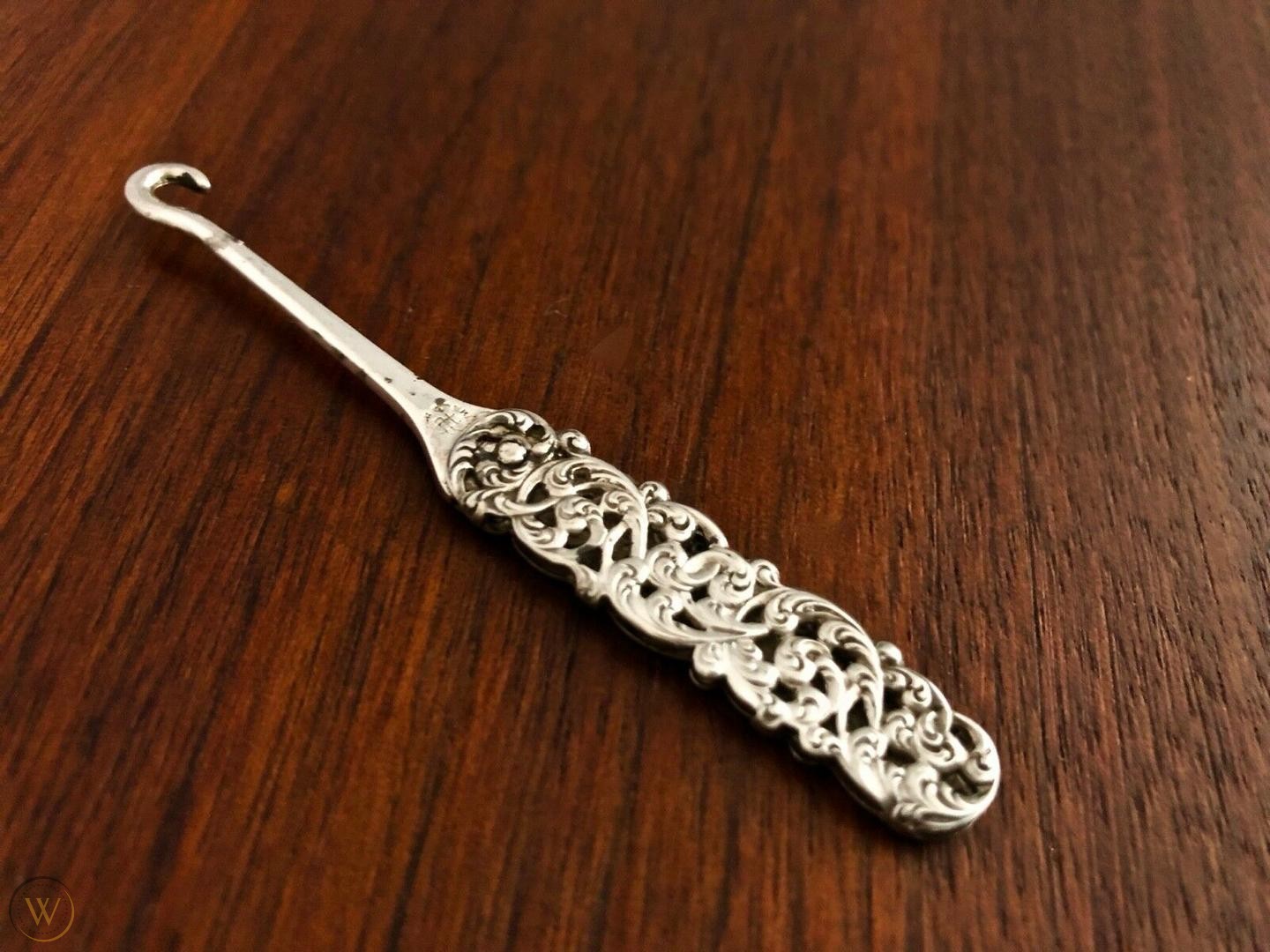
Sterling buttonhooks come in a variety of patterns such as florals, animal heads, or characters. Most British sterling buttonhooks include a maker’s mark. American sterling buttonhooks are usually marked “sterling” with no indication of the maker. However, those manufactured by Gorham, Kirk, Lapierre, Shiebler, Tiffany, Foster & Bailey, Unger Brothers, and Whiting include their maker’s mark.
Most sterling buttonhook manufacturers offered their buttonhooks as part of a matched dresser set. The sets usually included a shoehorn, scissors, nail file, letter opener, and similar items. British sterling sets typically came in a leather case with velvet lining. American sterling sets generally came in a celluloid box with decoupaged floral design.
Natural Buttonhooks
Some buttonhook handles were made from natural materials like mother-of-pearl, bone, horn, wood, ivory, shell, antler, stone, and similar substances. Oftentimes, wooden-handled ones had elaborately turned designs. Buttonhook handles made of ivory, horn, shell, bone, or mother-of-pearl could also be found as part of a matched dresser set.
Advertising Buttonhooks
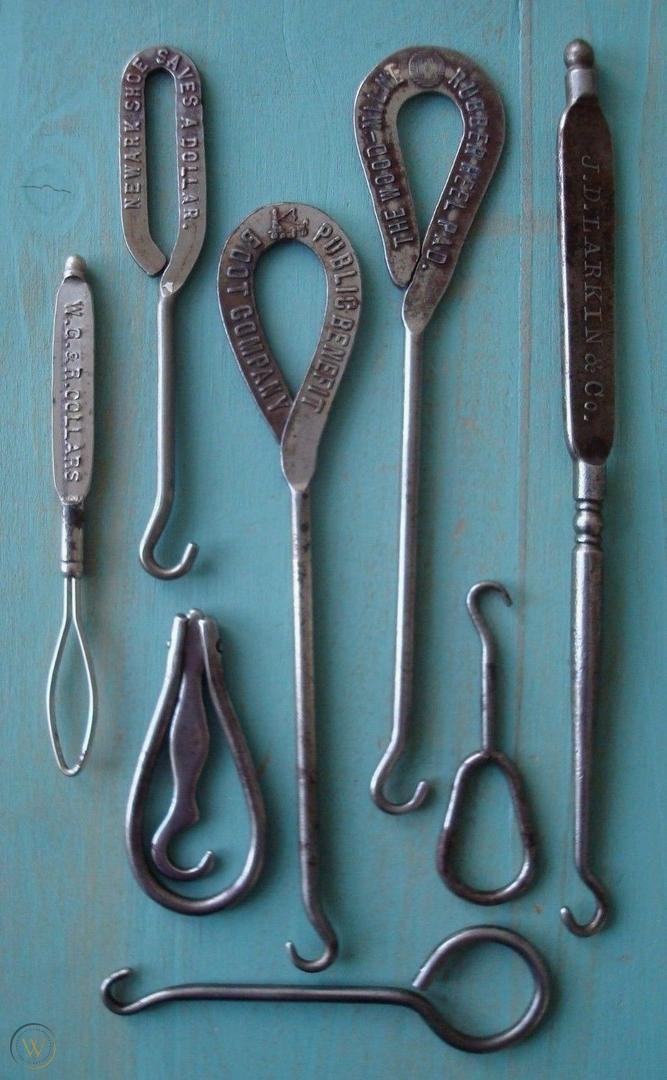
Beginning in the late 1800s, businesses started stamping their name and address on the buttonhook handle. These advertising buttonhooks were given to patrons to promote their business, usually at no charge. Most handles came in the shape of a ring, peanut, teardrop, or loop. They normally contain an 1895 patent date and are made of nickel-plated steel.
A few are also molded in a floral pattern with a promotional slogan and description of the goods for sale. Many loop hook advertising buttonhooks promoted collars or laundry starch since they were sold as “collar buttoners” for use on a man’s starched collar. Scarcer advertising buttonhooks include celluloid pinback handles. Manufactured by Whitehead & Hoag, these buttonhook handles contain a colorful advertising illustration.
Combo Buttonhooks
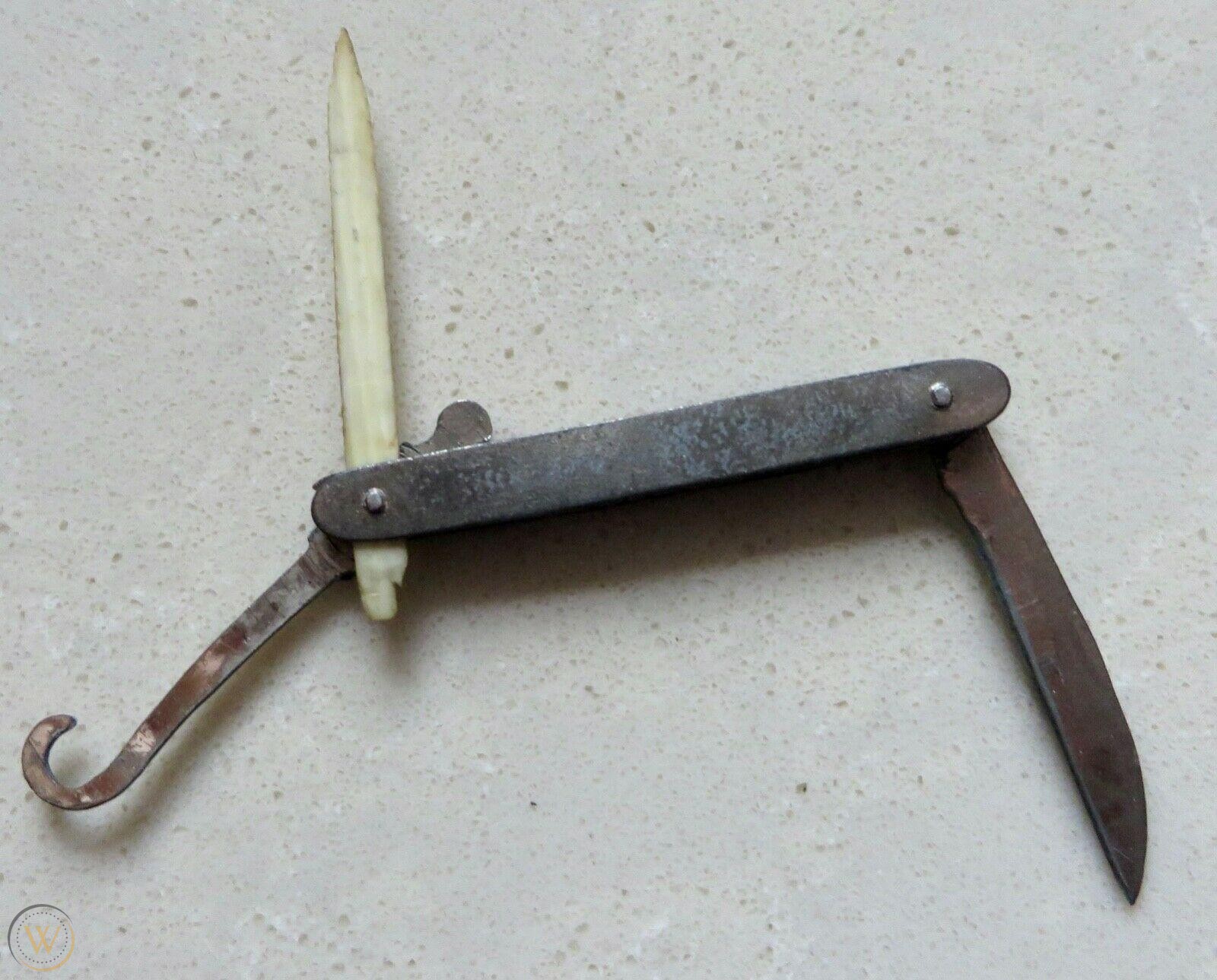
Some buttonhooks folded and retracted. Often combined with other objects, they could be used for more than one task. Objects like a shoehorn, scissors, penknife, can opener, tobacco cutter, nail file, and more paired together with a buttonhook to be used as a multi-tool (much like a Swiss Army knife). Another example includes a buttonhook on one end and a shoehorn on the other end.
Plastic Buttonhooks
Several buttonhook handles came in materials such as celluloid, Bakelite, French ivory, and marbled plastics. Some resemble tortoiseshell, amber, ivory, and other natural materials but are made of plastic. Most plastic buttonhooks are manufactured by DuPont and others and include a maker’s mark.
A few celluloid buttonhooks include real photographs under the celluloid. The photographs usually appear on both sides of the handle. Most are estimated to be from 1905 or later. These rarer buttonhooks are harder to find.
Trench Art Buttonhooks
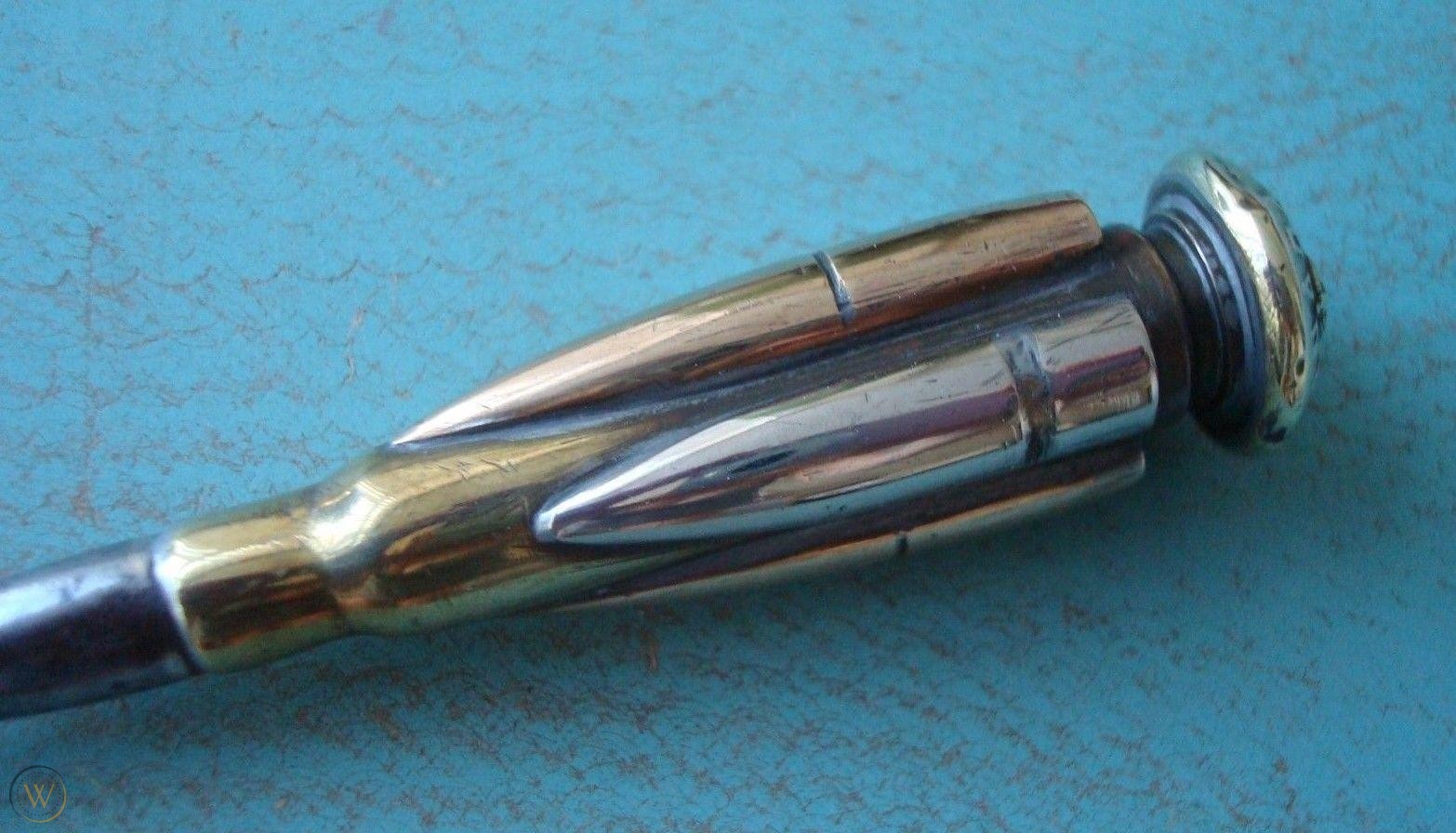
Created by both soldiers and civilians during World War I and after, trench art buttonhooks were mostly comprised of metal debris salvaged from battlefields. Most are made from materials such as bullet and shell casings, uniform buttons, plastic and metal fragments from machinery, and more. Some are engraved with personal messages to loved ones or with battle names and dates. Others contain a “washer” hook. The hook was hand-assembled with rings of plastics and metals and then polished smooth.
COLLECTING AND DISPLAYING
Since purchasing that first buttonhook at the local antique store, I’ve purchased several more, most with advertising on the handle. Due to their small size, they take up hardly any space, so they’re easy to collect and display. Simply mount a few in a shadow box and hang it on a wall. As another option, place a couple on a shelf next to items they were created for, like a buttoned boot and glove.
Karen Weiss is a freelance writer and enjoys decorating her home with vintage finds from her many collections. She also has an Etsy shop called SimplePatinaFinds.
WorthPoint—Discover. Value. Preserve.
The post Victorian Button Fasteners appeared first on WorthPoint.
